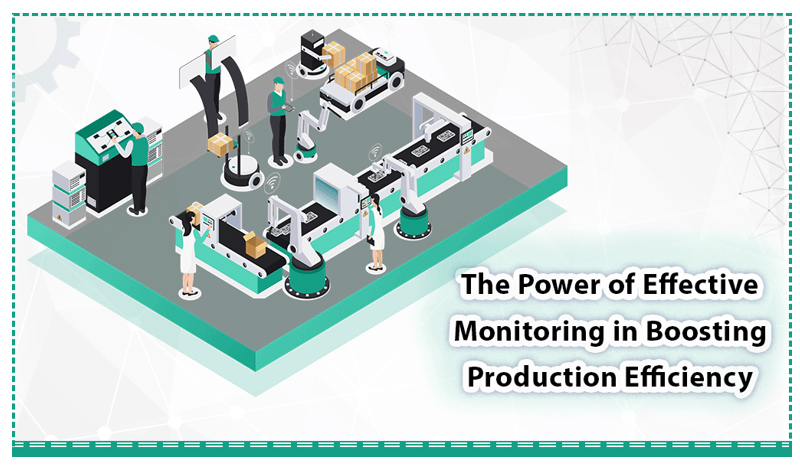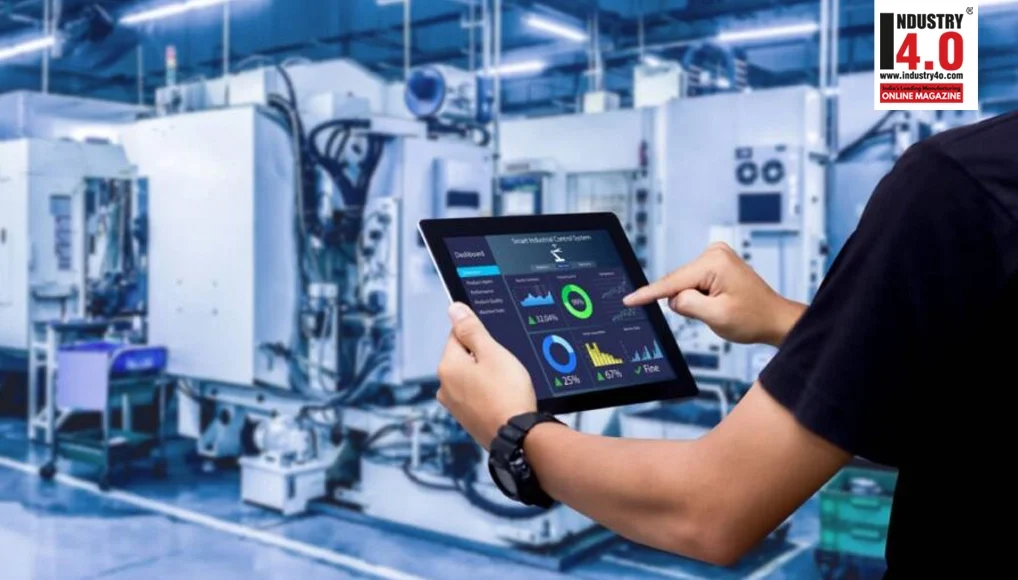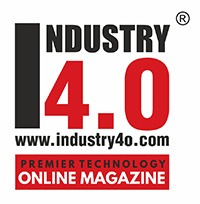The Power of Effective Monitoring in Boosting Production Efficiency
Introduction
In today’s fast-paced world, staying competitive requires more than just delivering high-quality products; it calls for streamlined processes and improved efficiency. Can you guess what plays a crucial role in achieving this? That’s right—effective production monitoring is the key to enhancing efficiency and driving profitability. Monitoring production processes helps identify inefficiencies on the shop floor, reduce downtime, and optimize overall operations. Various advanced technologies make this possible, and manufacturers can leverage them to maintain their competitive edge in this rapidly evolving landscape.
This article delves into how effective shop floor monitoring can significantly enhance efficiency and why it has become indispensable for modern manufacturing.
Understanding Production Monitoring
Production monitoring involves collecting and analyzing data from the production floor to optimize product quality and enhance the performance of manufacturing operations. It includes gathering data on machines, workflows, and resources throughout the entire production process, ensuring everything operates as planned without interruptions. This proactive approach helps mitigate risks, maintain quality standards, and achieve production goals. By tracking metrics such as machine uptime, resource utilization, and production timelines, companies can pinpoint inefficiencies, identify bottlenecks, and improve overall productivity.

Role of Real-time Data in Effectual Monitoring
Real-time data forms the backbone of effective monitoring of the production processes. It provides immediate insights into machine performance, material usage, and workflow progress. By tracking WIP in real time, manufacturers can quickly identify and address potential issues, minimizing downtime and keeping operations on track. Moreover, real-time data supports dynamic decision-making by enabling swift adjustments to workflows, ensuring consistent product quality and timely deliveries.
Setbacks from Lack of Monitoring
Without effective monitoring, manufacturers may encounter numerous challenges in their production processes. One of the most significant issues is increased downtime, as equipment failures or inefficiencies often go unnoticed. This can result in missed deadlines and diminished customer satisfaction. Another critical concern is resource wastage, as poor planning or undetected errors can lead to higher operational costs. Additionally, unresolved problems on the shop floor can cause quality issues, which may negatively impact the business’s reputation. A lack of visibility into production processes further complicates the identification and resolution of bottlenecks. These challenges underscore the urgent need for robust monitoring systems to ensure efficiency and maintain competitiveness.
Technologies Powering Production Monitoring
Technological advancements have revolutionized production monitoring, enabling precision and efficiency. Key technologies include:
✦ IoT Sensors: Collect real-time data from machines and equipment to monitor operational performance.
✦ AI and Machine Learning: Analyze patterns, predict potential issues, and support proactive decision-making.
✦ Cloud-based Platforms: Facilitate data storage, processing, and accessibility at scale.
✦ Automation Tools: Streamline workflows, reduce manual intervention, and enhance overall productivity.
These technologies work together to transform shop floor operations, providing manufacturers with smarter and more efficient monitoring capabilities.
Key Advantages of Operational Monitoring
Implementing effective production monitoring systems offers numerous benefits, such as:
✦ Enhanced Productivity: Streamlines workflows and optimizes operations, ensuring tasks are completed efficiently and without delays.
✦ Reduced Downtime with Faster Problem Resolution: Early anomaly detection and advanced analytics enable quick identification and resolution of issues, minimizing interruptions and keeping operations running smoothly.
✦ Improved OEE (Overall Equipment Effectiveness): Maximizes equipment utilization, enhances performance, and minimizes downtime, ensuring optimal production outcomes.
✦ Consistent Quality with Quality Monitoring: Continuous monitoring ensures adherence to quality standards by identifying and eliminating defects or inconsistencies in real time.
✦ Data-driven KPI Monitoring: Tracks critical Key Performance Indicators (KPIs), such as machine uptime, cycle times, and defect rates, providing actionable insights to optimize processes.
✦ Minimized Waste with Cost Predictability: Efficient use of materials and energy reduces operational waste, lowers production costs, and provides better insight into expenses for accurate budget management.
✦ Informed Decision-making: Real-time data insights empower manufacturers to make well-informed, strategic decisions to optimize operations.
✦ Improved Customer Satisfaction: Delivering high-quality products on time builds trust and loyalty, ensuring long-term customer relationships.
✦ Improved Worker Safety: Monitoring systems detect unsafe conditions, ensuring a safer work environment and reducing workplace risks.
✦ Scalability: Flexible systems enable businesses to scale operations efficiently without compromising productivity or quality.
 Steps to Implement Effective Monitoring
Steps to Implement Effective Monitoring
To ensure the successful implementation of production monitoring, follow these steps:
1. Pinpoint Areas for Improvement
Start by performing a comprehensive evaluation of your existing manufacturing processes to uncover inefficiencies, bottlenecks, or areas where visibility may be insufficient. This assessment should include a detailed review of key operational aspects, such as instances of machine downtime, delays in workflows, or recurring quality defects. By carefully analyzing these pain points, you gain a clearer understanding of the root causes of production challenges. This in-depth insight will serve as a valuable foundation for selecting the most suitable monitoring system that specifically addresses these issues and enhances overall operational efficiency.
2. Choose the Most Suitable Monitoring Technologies
Select the monitoring technologies that align with your specific requirements and operational objectives, as different technologies are designed to fulfill unique purposes within the production process. For instance, IoT sensors play a crucial role in tracking real-time data related to machine performance, enabling immediate insights into operational efficiency. AI-powered tools, on the other hand, provide predictive capabilities, helping to identify and address potential malfunctions before they occur, thereby reducing downtime and costly repairs.
Automation tools are invaluable for streamlining workflows, minimizing manual interventions, and enhancing overall process efficiency. Meanwhile, cloud-based platforms offer the advantage of storing vast volumes of data while ensuring easy and seamless access to it from anywhere. To maximize the benefits, it’s essential to select a monitoring solution that perfectly matches your operational needs and is tailored to address your unique challenges effectively.
3. Seamlessly Integrate Monitoring Tools with Existing Systems
Ensuring that the newly selected monitoring system can integrate effectively with your current systems, such as Enterprise Resource Planning (ERP), Manufacturing Execution Systems (MES), or other production management platforms, is crucial. This integration facilitates a seamless flow of data across various departments and processes, eliminating data silos and ensuring consistency during data transfers. By achieving this, you enable a more cohesive and efficient operational environment that supports better decision-making and streamlined workflows.
4. Train Your Team Effectively
Provide your shop floor team with the essential knowledge and skills needed to operate the new monitoring system efficiently. The training should encompass understanding how to interpret real-time data, respond to system alerts, and analyze long-term trends. Empowering your workforce with these capabilities will greatly enhance the effectiveness of the monitoring implementation and ensure the system is used to its fullest potential, driving better results across operations.
5. Analyze Data to Optimize Processes
Once the monitoring system is in place, it’s crucial to consistently analyze the data being collected. Regularly reviewing this data allows you to identify trends and pinpoint inefficiencies early on. Merely collecting data isn’t enough; the key lies in transforming the gathered information into actionable insights that can drive improvements. By leveraging these insights, you can refine processes to boost productivity, minimize waste, and elevate product quality over time.
6. Create a Roadmap for Continuous Improvement
Production process monitoring should be viewed as an ongoing process rather than a one-time initiative. Develop a comprehensive roadmap that outlines periodic reviews of machine performance over specific intervals, plans for technology upgrades, and strategies for scaling the monitoring system as your manufacturing operations expand. This approach of continuous improvement ensures the system stays relevant, up-to-date, and consistently delivers long-term benefits to manufacturers.
7. Leverage Quality Management Tools
Integrate quality management tools into your monitoring systems to conduct consistent quality control checks and ensure that your products adhere to the required standards. Automated quality management tools are particularly valuable for identifying deviations in product quality, enabling swift corrective actions and minimizing the risk of defects or recalls.
By adhering to these outlined steps, manufacturers can effectively establish a strong production monitoring system that enhances operational efficiency and drives long-term success.
Maximize ROI with Efficient Monitoring
Investing in production monitoring systems delivers a robust return on investment (ROI) that goes well beyond immediate cost reductions. These systems unlock strategic value for manufacturers, particularly in their ability to scale operations efficiently. By providing continuous, real-time data, production process monitoring allows companies to closely analyze performance trends, enabling more accurate long-term forecasting, improved capacity utilization, and effective capacity planning. This proactive approach reduces the need for reactive, costly investments in infrastructure or labor. Additionally, by aligning resources with business goals, production process monitoring allows manufacturers to make more data-driven decisions that enhance both short-term operational efficiency and long-term growth potential, ensuring a quicker and more substantial ROI.
Future of Production Monitoring
Emerging technologies and evolving trends are shaping the future of production monitoring. AI and Machine Learning will play a greater role in predictive analytics, enabling manufacturers to foresee and address issues before they arise. The adoption of 5G and 6G networks will enhance real-time data transfer, improving monitoring capabilities. Advanced analytics tools will provide deeper insights, driving smarter decision-making. As Industry 4.0 advances, production process monitoring systems will become more integrated, efficient, and indispensable for maintaining a competitive edge.
Conclusion
Effective production monitoring is not just a necessity but a game-changer for manufacturers striving to achieve operational excellence. By leveraging real-time data, advanced technologies, and proactive strategies, companies can overcome inefficiencies, boost productivity, and secure long-term success. With our Smart Factory Solutions, manufacturers gain access to cutting-edge monitoring capabilities that ensure seamless tracking, identify inefficiencies, and drive process optimization. Don’t wait to transform your production processes—embrace our Smart Factory Solutions today and take the first step toward unparalleled efficiency, innovation, and growth.
About the Author :

Mr. Saravana Kumar,
Vice President – Solutions,
Bevywise Networks Inc.,
Mr. Saravana Kumar is the Vice President of Solutions at Bevywise Networks Inc., where he is spearheading innovative IoT and Industry 4.0 solutions, including an industry-leading MQTT broker and IoT platform. His leadership ensures that Bevywise’s cutting-edge technology supports industrial and commercial IoT customers in seamlessly collecting, analyzing, and visualizing their data for enhanced decision-making,
operational efficiency, and reliability.
Mr. Saravana Kumar is a highly experienced Solution Architect with a robusttechnical background and over two decades of expertise in delivering large-scale, complex solutions. Specializing in Big Data, SDN, AI, and endto- end project management, Saravana has proven success in executing and managing key projects, from RFP analysis to implementation. His career includes experience with top organizations like Zoho and WIPRO.
Mr. Saravana’s journey in the tech industry began with a role as a Software Engineer at AdventNet (now Zoho) from 2001 to 2004, where he contributed to the development of key applications. He then moved on to WIPRO, where he had a distinguished 16-year tenure, taking on roles with increasing responsibility and impact. As a Managing Consultant at WIPRO from 2015 to 2021, he led a team to build a next-generation management application for Fujitsu Network Communications, built on the Open Daylight Framework and utilizing Hadoop/Spark-based Big Data solutions.
Mr. Saravana was instrumental in managing customer requirements, overseeing a 100+ team, and ensuring successful deployments of customer-requested features.
Before this, Mr. Saravana Kumar served as a Presales Consultant and Software Architect at WIPRO, designing and delivering deployment solutions for Alcatel-Lucent motive applications, as well as leading teams through successful product demos and roadshows across multiple telecom vendors. Saravana’s expertise spans various domains, from network analysis and multi-vendor projects to building telecom solutions that integrate DSLAM technologies for global operators.
In addition to his work at WIPRO, Saravana took on roles such as Onsite Consultant, Software Architect, and Technical Lead, where he led development teams across Europe and Asia to build multi-vendor plug-ins and network diagnostic tools that were adopted globally by major telecom providers. Mr. Saravana Kumar is known for his leadership, cross-functional coordination, and successful integration of agile methodologies within his teams.
Mr. Saravana Kumar can be contacted at :
About Bevywise Networks Inc.,
 Transforming Industries with IoT, AI, and Smart Solutions
Transforming Industries with IoT, AI, and Smart Solutions
At Bevywise Networks, we lead the charge in digital transformation, offering advanced MQTT-based IoT platforms, smart factory solutions, AI-driven manufacturing enhancements, and innovative educational tools. Our mission is to empower businesses and educational institutions to thrive in the connected era by providing tailored solutions that drive operational efficiency and academic excellence.
Our Expertise: MQTT-based IoT Platform: Enabling seamless, real-time communication across devices with scalable IoT connectivity, enhancing data exchange and system integration. Smart Factory Solutions: Revolutionizing manufacturing with intelligent solutions that optimize production, Traceability, Quality, Data Management, and operational performance.
AI Implementation for Manufacturing: Leveraging artificial intelligence to refine manufacturing processes, improve quality control, and provide plan annalysis and effective planning, driving smarter, more efficient operations.
Educational Tools: Developing state-of-the-art tools for colleges and institutions to enrich learning, streamline administration, and enhance educational outcomes.
Flexible Solutions: We offer both SaaS (Software-as-a-Service) and on-premise models to meet the unique needs of our clients, providing flexibility in deployment and management. Why Choose Bevywise Networks?
Expert Team: Our professionals bring extensive experience in IoT, AI, smart manufacturing, and educational technologies, delivering proven results across various industries.
Customized Approach: We craft bespoke solutions that align with your specific business or educational goals, ensuring optimal performance and impact. Commitment to Excellence: We uphold the highest standards of quality and integrity, continuously innovating to stay at the forefront of technological advancements. We are Open for Collaboration to enhance the world into much productive place.
Bevywise Networks Inc., can be contacted at:
X | FaceBook | YouTube | LinkedIn











